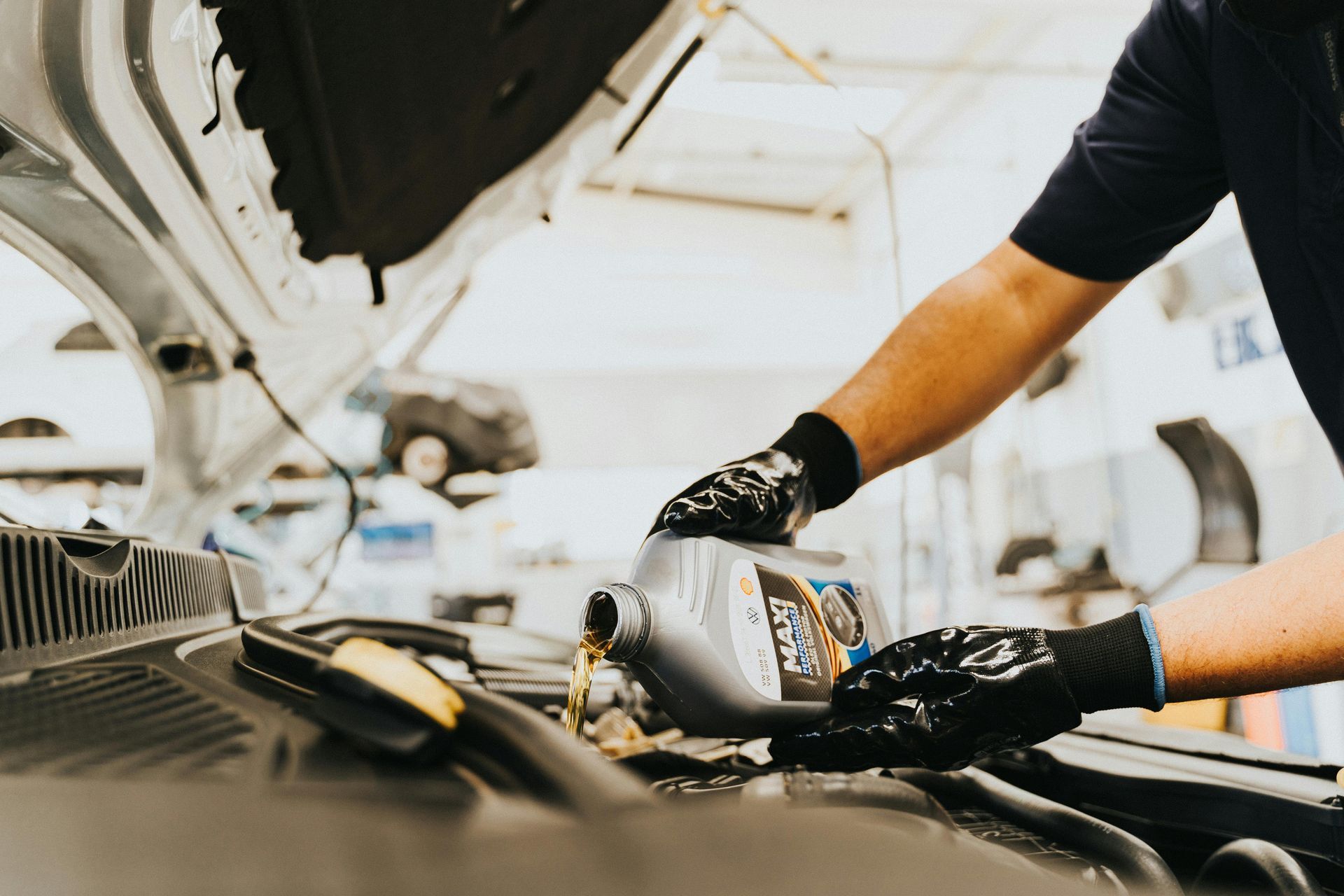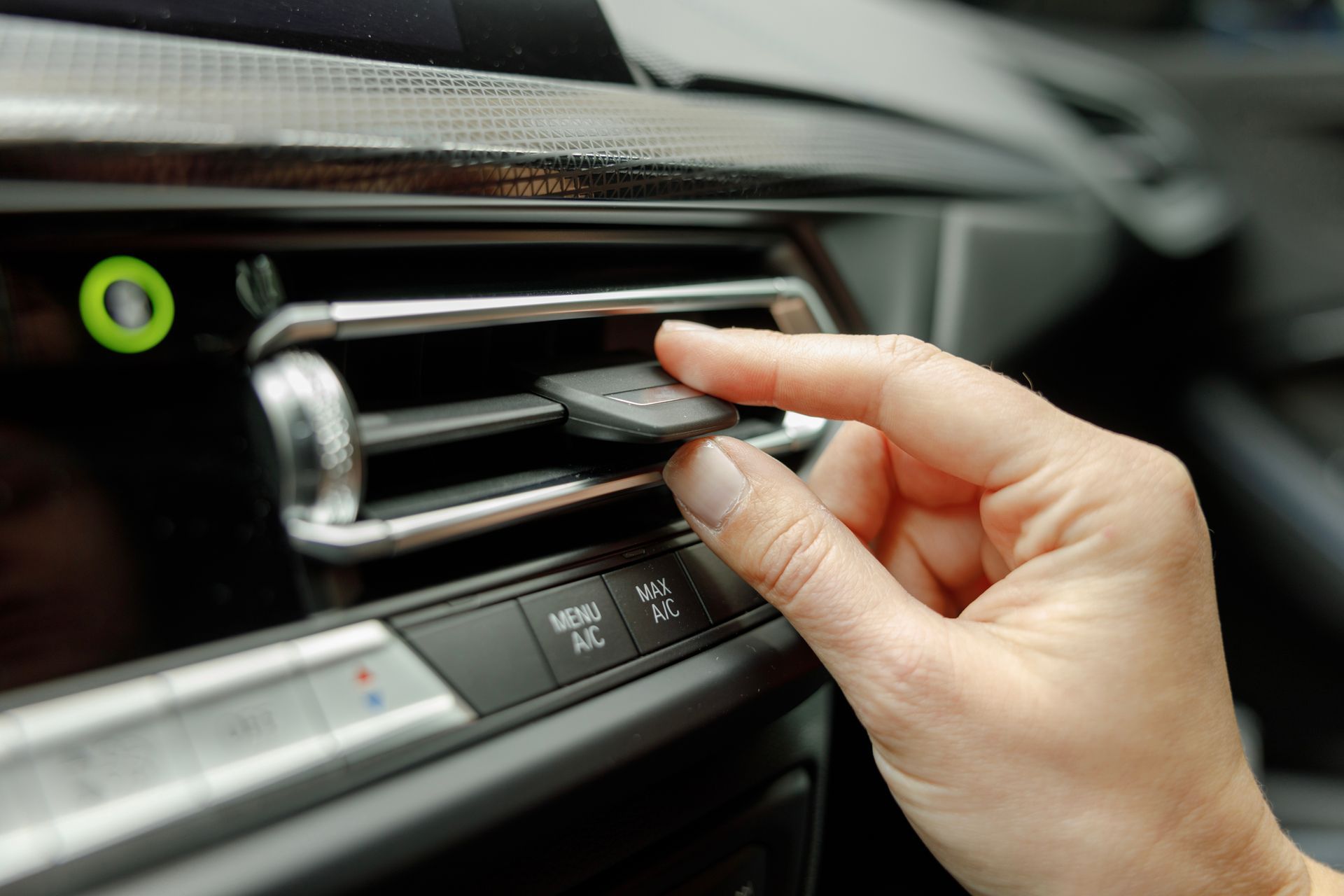Winter Oil Changes: Why Cold Weather Maintenance Matters for Your Engine
Winter in Heath, Ohio, can bring unpredictable weather—icy winds, snow-packed roads, and temperatures that can dip well below freezing. While it’s common to think about swapping to winter tires or checking your battery before the cold sets in, making sure your oil is changed and your engine is properly lubricated is equally vital. Cold weather puts extra stress on your vehicle’s engine, making the right oil choice and maintenance schedule more important than ever. In this detailed guide, we’ll cover why winter oil changes matter, how cold temperatures affect engine lubrication, and what Jeremiah’s Automotive can do to keep your car running smoothly throughout the season.
Why Winter Oil Changes Matter
Your vehicle’s engine relies on clean, well-formulated oil to minimize friction between its internal components. Over time, engine oil breaks down and accumulates contaminants—like metal shavings, dirt, and moisture—that can hamper performance and lead to costly repairs. During winter, these issues become even more pronounced due to fluctuating temperatures and the additional strain placed on your engine.
Key Benefits of a Winter Oil Change
1. Improved Cold-Start Performance
- Thick, old, or contaminated oil can make it harder for your engine to turn over on frigid mornings. Fresh, properly formulated oil flows more easily, reducing wear on critical engine components during start-up.
2. Enhanced Fuel Efficiency
- An engine operating under optimal lubrication uses fuel more efficiently. When oil is old or the wrong viscosity, the engine works harder, increasing fuel consumption.
3. Reduced Wear and Tear
- Over time, contaminants and degraded oil can accelerate engine wear. By changing your oil before winter hits, you remove these harmful particles, helping your engine last longer.
4. Better Overall Engine Health
- Regular, timely oil changes—especially during winter—help protect your vehicle’s most vital components, saving you from bigger repair bills down the road.
How Cold Weather Affects Engine Oil
Viscosity—the measure of a fluid’s thickness—plays a huge role in how well oil circulates in your engine, especially in sub-freezing temperatures. Engine oil thickens as temperatures drop, which can hinder its ability to reach all parts of the engine quickly.
Cold Cranking and Engine Stress
When the mercury falls, your engine requires more energy to start. Oil that’s too thick can’t flow efficiently, leading to:
- Longer Cranking Times: Your battery and starter work harder to overcome the added friction from cold, viscous oil.
- Higher Friction at Start-Up: Because the oil isn’t flowing as freely, metal parts may grind against each other, causing accelerated wear and tear.
Short Trips and Moisture Buildup
In colder months, many drivers run short errands, meaning the engine might not get hot enough to burn off moisture. Over time, this moisture mixes with oil and forms acids that can corrode metal components.
- Condensation: Water vapors from the combustion process and air can condense in colder temperatures, accumulating in the oil.
- Sludge Formation: Excess moisture and byproducts of combustion can create sludge if not addressed, especially if oil changes are neglected.
Choosing the Right Oil for Winter
One of the most common questions drivers have is whether they need a specific type of oil for winter. The short answer is: it depends on your vehicle and driving conditions. Most modern vehicles use multi-grade oils, indicated by a format like 5W-30 or 0W-20. The number before the “W” (which stands for “winter”) indicates the oil’s viscosity at low temperatures, and the number after the dash represents its viscosity at operating temperatures.
Multi-Grade Oil Explained
- The “W” Rating: A lower number before the “W” (like 0W or 5W) means the oil remains thinner at cold temperatures, aiding quicker lubrication during start-up.
- Operating Temperature Viscosity: The second number (e.g., 20, 30, or 40) reflects how thick the oil is when your engine is warm.
Synthetic vs. Conventional Oils
- Synthetic Oil: Offers superior cold-weather performance because it’s engineered to have more consistent viscosity across a wide temperature range. It often provides better protection, reduces engine deposits, and can last longer than conventional oil.
- Conventional Oil: While generally cheaper, it may not perform as well in extreme cold or under high-stress conditions. Conventional oil also breaks down faster and may require more frequent changes.
Check Your Owner’s Manual
Your vehicle’s manufacturer often provides guidelines on which oil grades are recommended for various climates. Always follow these recommendations, or consult with a trusted mechanic—like those at Jeremiah’s Automotive—to make sure you’re using the optimal oil for Heath, Ohio’s winter conditions.
Frequency of Oil Changes in Winter
The conventional wisdom used to be every 3,000 miles or three months, but modern vehicles and oils can often go longer—some up to 5,000, 7,500, or even 10,000 miles between changes. However, winter driving conditions can be more severe, with frequent cold starts, short trips, and potential idling when warming up the car.
Signs You Need an Oil Change
- Dashboard Oil Light: Always heed warning lights on your dashboard.
- Dark or Dirty Oil: Fresh oil has an amber color. As it collects contaminants, it darkens.
- Strange Engine Noises: Unusual ticking, grinding, or knocking can indicate inadequate lubrication.
- Mileage or Time Intervals: If you’ve reached the manufacturer’s recommended oil change interval, don’t delay—especially in winter.
Severe Driving Conditions
In colder climates like Heath, you may be considered a “severe driver” if you:
- Make frequent short trips.
- Drive in stop-and-go traffic.
- Tow heavy loads or carry significant cargo.
- Experience extended idle times.
If you fit these criteria, it’s wise to err on the side of more frequent oil changes to ensure your engine’s longevity.
The Oil Change Process at Jeremiah’s Automotive
At Jeremiah’s Automotive in Heath, Ohio, we take a comprehensive approach to oil changes, ensuring your vehicle is thoroughly inspected and treated with care—especially crucial during winter months.
1. Vehicle Inspection
Before we even get to changing the oil, our technicians perform a quick inspection:
- Fluid Levels: We’ll check coolant, brake fluid, windshield washer fluid, and power steering fluid to ensure everything is topped off.
- Battery Health: Since cold weather can drain batteries faster, we’ll take a look at yours to make sure it’s winter-ready.
- Belts and Hoses: Freezing temperatures can cause rubber components to crack or become brittle.
2. Draining the Old Oil
Once we confirm the need for an oil change, we’ll lift your vehicle safely and drain the old oil from the engine. This step removes contaminants and sludge that have built up over time.
3. Replacing the Oil Filter
The oil filter is integral to trapping particles and preventing them from circulating through the engine. A dirty or clogged filter negates the benefits of fresh oil, so we always install a new one.
4. Refilling with the Right Oil
We consider your manufacturer’s recommendations, your vehicle’s age, your driving habits, and the winter climate in Heath, Ohio, to select the optimal oil viscosity for you. This could be a synthetic blend, full synthetic, or a high-quality conventional oil.
5. Final Check-Up
After refilling the oil, we run the engine to ensure everything is functioning correctly. We then inspect the vehicle one more time for any leaks or issues, topping off other fluids as needed.
Additional Winter Maintenance Tips
Changing your oil is just one part of comprehensive winter car care. For maximum protection and performance, consider these additional steps:
1. Check Tire Pressure and Tread
- Cold weather can cause tire pressure to drop, and adequate tread depth is essential for traction on icy roads.
2. Inspect Windshield Wipers
- Damaged or old wiper blades are dangerous during snowstorms. Consider installing winter wiper blades for optimal visibility.
3. Test Your Battery
- Freezing temperatures can reduce a battery’s capacity significantly. A quick test can prevent unexpected breakdowns.
4. Use the Right Coolant Mixture
- Inadequate antifreeze levels can lead to engine freeze-ups in sub-zero temperatures.
5. Keep an Emergency Kit
- Include items like a flashlight, jumper cables, blankets, a small shovel, and traction aids (like kitty litter or sand) in case you get stuck.
Common Myths About Winter Oil Changes
Despite the clear benefits, many myths persist about oil changes and cold weather. Let’s set the record straight on a few of them:
1. “I Can Just Warm Up My Engine Longer Instead of Changing the Oil.”
- Reality: Idling your car for extended periods doesn’t magically refresh the oil. If the oil is old or degraded, idling only circulates dirty oil, adding wear to engine components.
2. “Synthetic Oil Is a Waste of Money.”
- Reality: Synthetic oil costs more upfront but can offer better cold-weather performance and longer intervals between changes—often saving money in the long run.
3. “Any Oil Will Do for Winter.”
- Reality: Different oils have different viscosity ratings and chemical compositions. The wrong oil can thicken excessively in the cold, leading to poor lubrication and possible engine damage.
4. “I Don’t Need a Full Oil Change; Topping Off Is Enough.”
- Reality: Adding fresh oil to old, contaminated oil dilutes the benefits. Topping off isn’t a substitute for a proper oil change that removes accumulated sludge and contaminants.
How Jeremiah’s Automotive in Heath, Ohio, Helps You Stay Winter-Ready
At Jeremiah’s Automotive, we pride ourselves on delivering thorough, dependable service tailored to the specific challenges of winter driving in Heath, Ohio. Our experienced team understands the unique wear and tear cold weather inflicts on vehicles, and we’ve structured our services to address those needs head-on.
Quality Products
We use high-quality oils and filters compatible with a range of vehicle makes and models, including European imports, domestic brands, and everything in between. If synthetic or synthetic-blend oils are recommended for your vehicle, we source reputable brands to ensure consistent, reliable performance.
Skilled Technicians
Our certified technicians stay up-to-date on the latest auto maintenance trends and manufacturer guidelines. Whether you drive a late-model sedan or a high-mileage SUV, we approach each oil change with the same level of diligence and care.
Winter Inspection Bundle
Ask about our winter inspection package, which includes:
- Oil change and filter replacement.
- Battery test and inspection.
- Tire pressure and tread depth check.
- Coolant strength and level assessment.
- Belt and hose inspection.
- Wiper blade and washer fluid top-off.
This comprehensive approach helps you tackle the season with confidence, knowing your vehicle has been checked from top to bottom.
Customer-Focused Experience
We understand that auto maintenance can sometimes feel overwhelming. Our friendly staff takes the time to walk you through each service recommendation and answer any questions you have. With transparent pricing and honest advice, you’ll never feel pressured or left in the dark.
Frequently Asked Questions (FAQs)
1. Can I switch to a lower-viscosity oil for winter and then switch back in summer?
- Yes, but most modern multi-grade oils already account for seasonal temperature changes. Consult your owner’s manual or ask our technicians if a seasonal switch is necessary or beneficial for your specific vehicle.
2. How do I know if I should choose synthetic oil?
- If you drive in extremely cold conditions or often take short trips that prevent the engine from reaching operating temperature, synthetic may offer better protection. Our team can help you make an informed decision.
3. Do I need to change the oil filter every time?
- Absolutely. The oil filter traps contaminants; if it’s clogged or dirty, it can’t do its job effectively, negating many of the benefits of fresh oil.
4. What if I drive fewer miles—do I still need regular oil changes?
- Yes. Even if your mileage is low, oil can degrade over time, and moisture can accumulate. Follow a time-based schedule—such as every six months—if you don’t hit the mileage threshold.
5. What happens if I delay my oil change?
- Delaying can lead to increased engine wear, reduced performance, and potentially costly repairs down the line. In winter, these risks become more pronounced as cold starts strain the engine further.
Schedule Your Winter Oil Change at Jeremiah’s Automotive
Don’t wait until your engine starts protesting on a frosty morning. Whether you’re gearing up for holiday travel or just daily commutes, a winter oil change is one of the most effective ways to protect your vehicle from the harsh effects of cold weather. At Jeremiah’s Automotive in Heath, Ohio, we’re here to keep your car running smoothly and safely all season long.
- Contact Us:
- Phone: 740-788-9222
- Website: Jeremiah’s Automotive
- Location: Heath, Ohio
- Hours of Operation:
- Monday to Friday: 8:00 AM – 5:00 PM
- Saturday & Sunday: Closed (Call if you need a special appointment time)
Final Thoughts
From making cold starts easier to ensuring better fuel efficiency, winter oil changes are a crucial part of seasonal vehicle maintenance. By choosing the right oil viscosity and following a timely service schedule, you’ll help your engine endure the demands of Heath, Ohio’s colder months. At Jeremiah’s Automotive, we believe in a proactive approach—so don’t wait until a warning light comes on or your engine struggles on a subzero morning. Schedule your next oil change today and keep your vehicle protected against winter’s harshest conditions. Drive safe, stay warm, and let us take the worry out of winter car care so you can focus on what matters most—getting where you need to go without any unexpected hitches.










